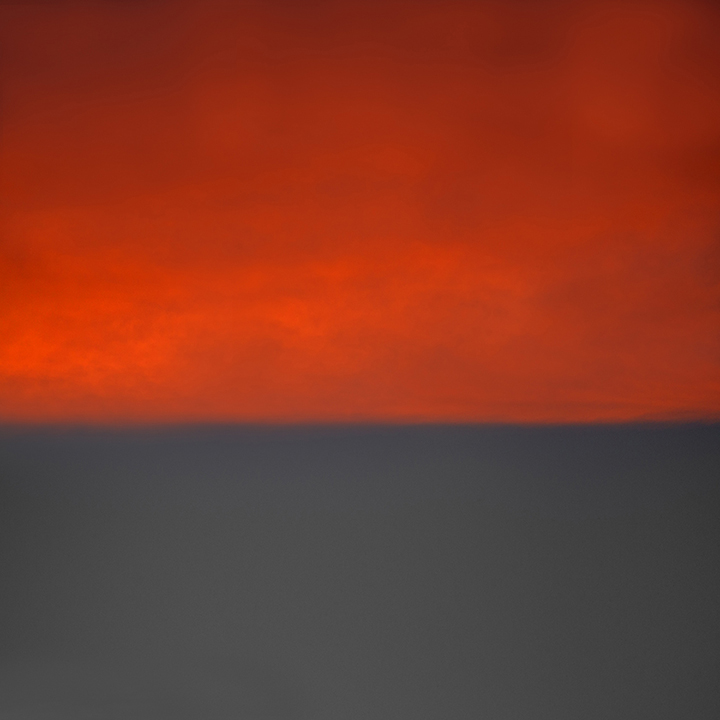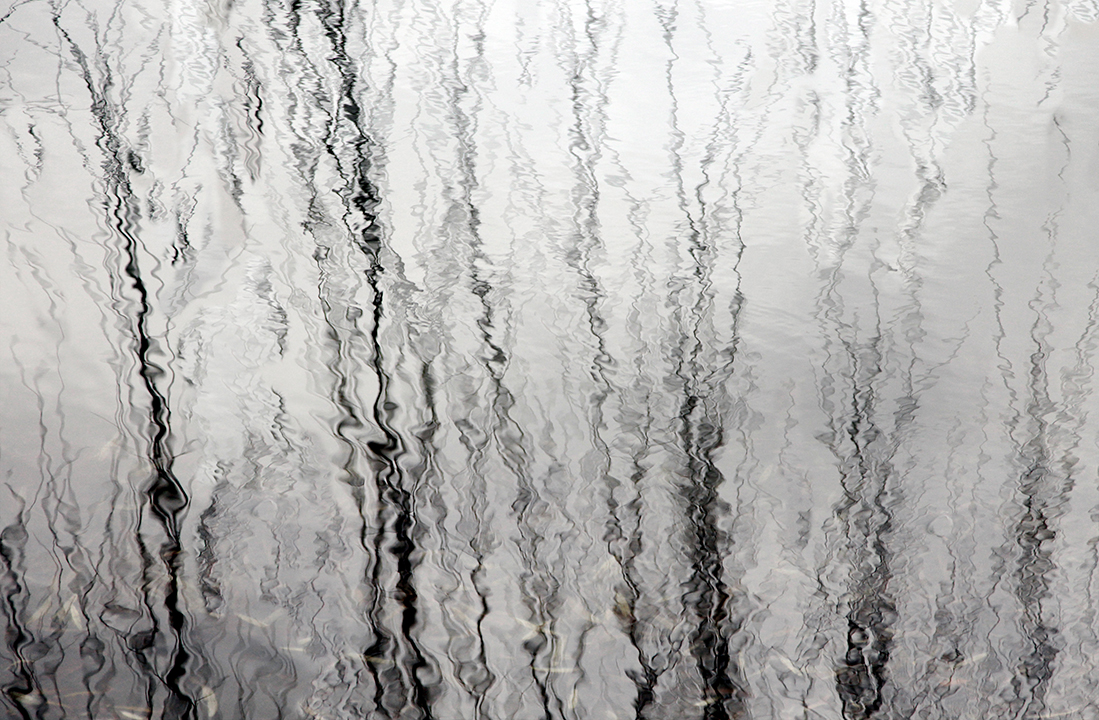Image above: ©Carolyn Marks Blackwood, General Relativity, 2014. Courtesy of Von Lintel Gallery, Los Angeles.
Carolyn Marks Blackwood is a photographer who has spent her life looking at paintings. Consequently, it is no surprise that her photographs are related to the Pictorialists, a group of the most intelligent and sensitive photographers who created a style of photography based on painting rather than on documentation, to demonstrate that photography was an independent, creative form of fine art.
Blackwood’s work also connects photography directly to painting, especially that of the New York School, whose works were metaphoric, rather than literal; more emotionally expressive than objectively specific. Her images skate on the edge between Abstraction and Representation. Inspired by Color Field painters, and artists like Rothko and Newman, Blackwood focuses on images that have strong verticals or horizontals and which fill the whole optical field. Many of her compositions also recall the “all over” disposition of color that Pollack inherited from the Impressionists. One sees the totality, rather than focusing on one static point. The images are flowing, liquid and cover the whole surface edge to edge, just as the paintings of Rothko, Newman and Pollack and they create a luminous environment. It is telling that one of her favorite painters, Gerhard Richter, paints in two styles, one abstract and the other figurative. Her awareness of both possibilities simultaneously, is the key to her style.
 ©Carolyn Marks Blackwood, Blue Shift II, 2014. Courtesy of Von Lintel Gallery, Los Angeles.
©Carolyn Marks Blackwood, Blue Shift II, 2014. Courtesy of Von Lintel Gallery, Los Angeles.
 ©Carolyn Marks Blackwood, Blue Shift II, 2014. Courtesy of Von Lintel Gallery, Los Angeles.
©Carolyn Marks Blackwood, Blue Shift II, 2014. Courtesy of Von Lintel Gallery, Los Angeles.
The work is abstract in the sense that we cannot necessarily identify their origins, and yet their origin is always in things seen by all. To paraphrase Frank Stella, “ what you see is what you see.” The question is, what Do you see? There is calculated ambiguity in Blackwood’s images. They are suggestive rather than obvious. The eye must interpret what it sees. The sources of her abstractions are hinted at, but never defined with certainty. Indeed, it is this double-edged vision of the concrete made abstract, that makes her work an exciting challenge.
 ©Carolyn Marks Blackwood, Redshift, 2014. Courtesy of Von Lintel Gallery, Los Angeles.
©Carolyn Marks Blackwood, Redshift, 2014. Courtesy of Von Lintel Gallery, Los Angeles.
Blackwood’s studio in the Hamlet of Rhinecliff, New York, sits on a bluff from which one sees the Hudson River flowing below. The horizon stretches out as far as the eye can see. Most of her photographs are taken from this very special site where the four seasons change dramatically, transforming the landscape in both it’s forms and colors. In Winter, Blackwood takes advantage of the Ice floes and has based a series which captures the drama of Ice on the River shattering into shards with the tide. Recently, her fascination with natural phenomena brought her back to her birthplace, in Anchorage Alaska, and then on a scientific expedition in the Arctic.

©Carolyn Marks Blackwood, Inclination III, 2014. Courtesy of Von Lintel Gallery, Los Angeles.
 ©Carolyn Marks Blackwood, Wavelenght, 2014. Courtesy of Von Lintel Gallery, Los Angeles.
©Carolyn Marks Blackwood, Wavelenght, 2014. Courtesy of Von Lintel Gallery, Los Angeles.
Blackwood is sensitive to the manifold and surprising, sometimes almost imperceptible patterns of nature and natural phenomena. “There is a world in a drop of water” she says. From her 180 degree vantage, she watches the storms roll over the mountains and cross the river, creating powerful patterns of movement, which is one of Blackwood’s principal concerns. She is interested in finding the rhythmic structures in nature, and translating them. Perhaps her background as a musician plays into this. The extreme close up, powerful zoom lenses bring images to the surface, recalling pictorial space and surface texture; capturing detail that would otherwise be invisible. Contrasts between dark and light are vital to her vision. Once again this is a pictorial concern related to Chiaroscuro in painting. She captures the light and it’s luminosity as it shines through clouds and bounces off water.
Walter Benjamin foresaw the future of photography when he wrote in his 1931 Short History of Photography, “The camera is getting smaller and smaller, ever readier to capture fleeting and secret images whose shock effect paralyzes the associative mechanisms in the beholder.” Nature in it’s workings and not literally it’s recognizable forms but rather the feel of the wind and water, the movement of currents and clouds is what fascinates Blackwood. In this sense her photographs are related to the Impressionists’ attempts at capturing a fleeting moment in time. Because the moment is glimpsed and it’s source is not entirely revealed, the act of interpretation is the most important interface between viewer and art object. Although some of her images may read as cataclysmic, she is not involved with the end of the world, but with the beauty of the world now, this moment, this second, as she transforms a detail of nature into abstraction. This is the fine edge between abstract imagery and emotional expressiveness that creates a compelling mystery. Decoding that mystery is the heart of the experience of her work.
By Barbara Rose


